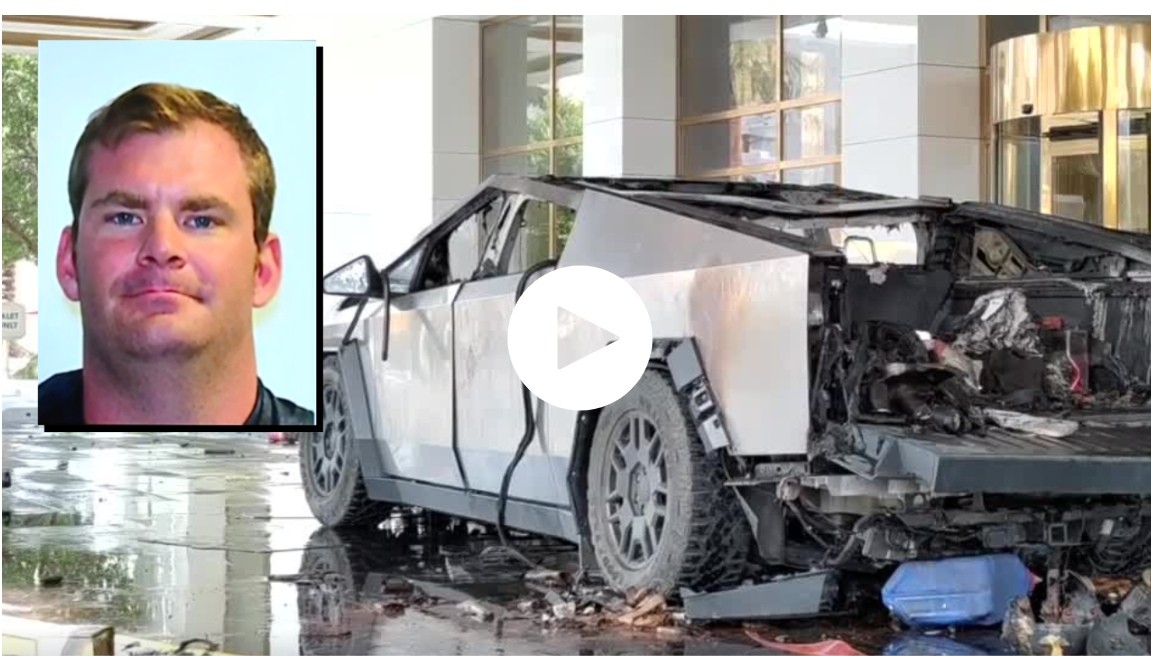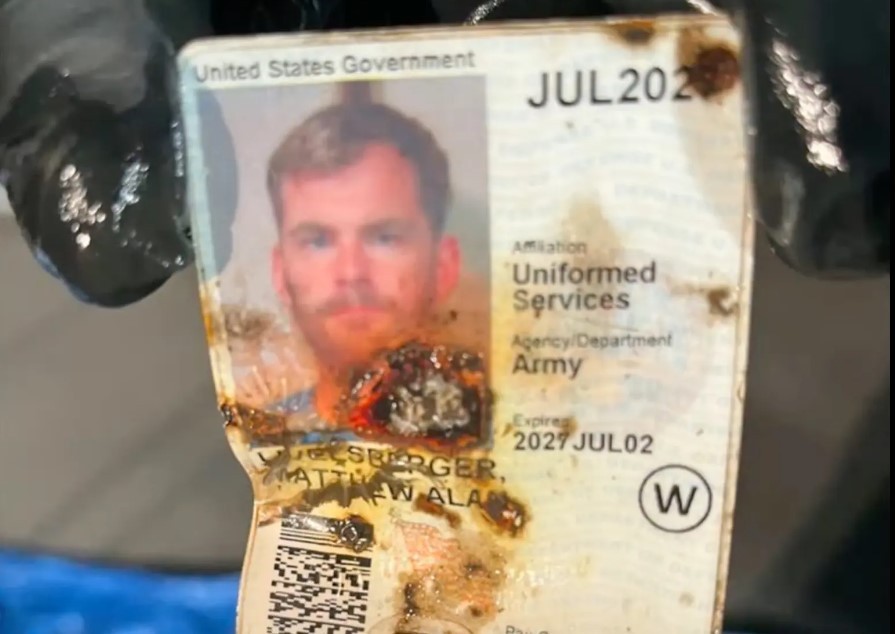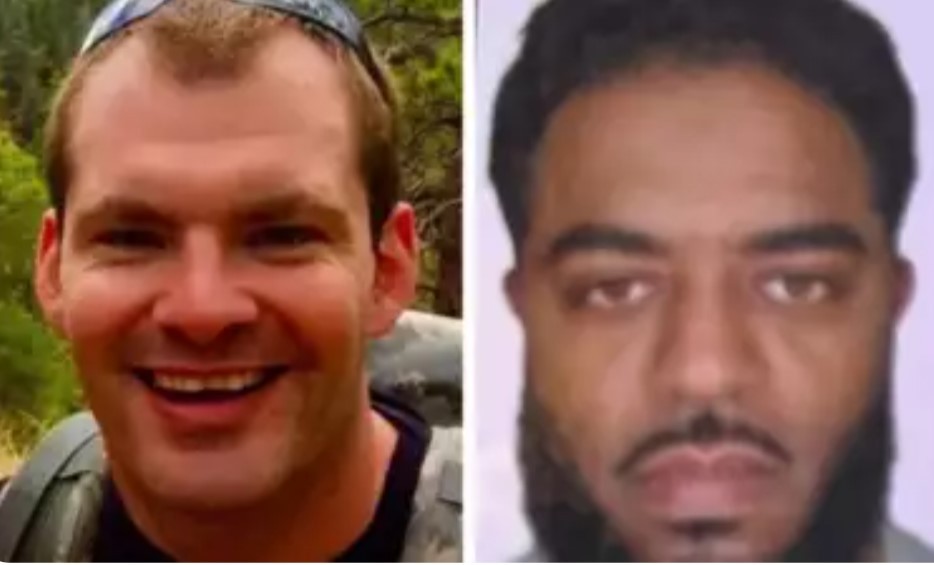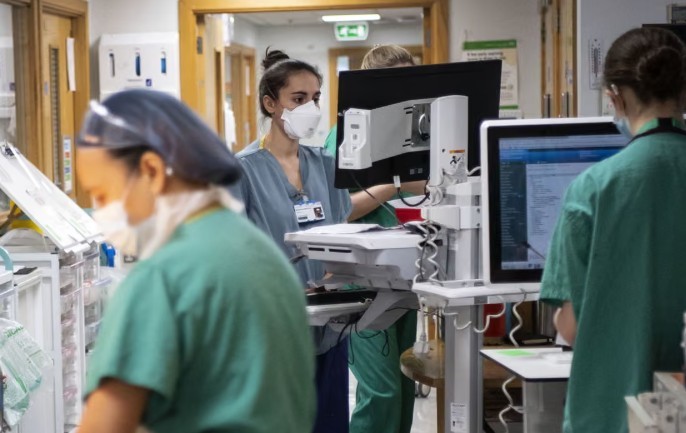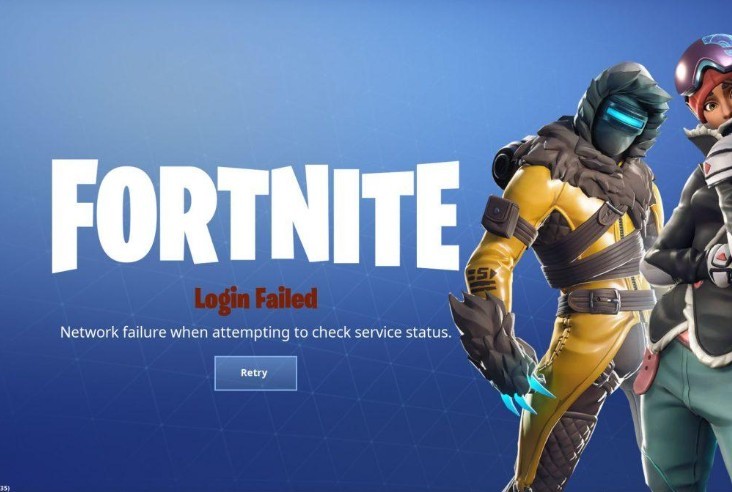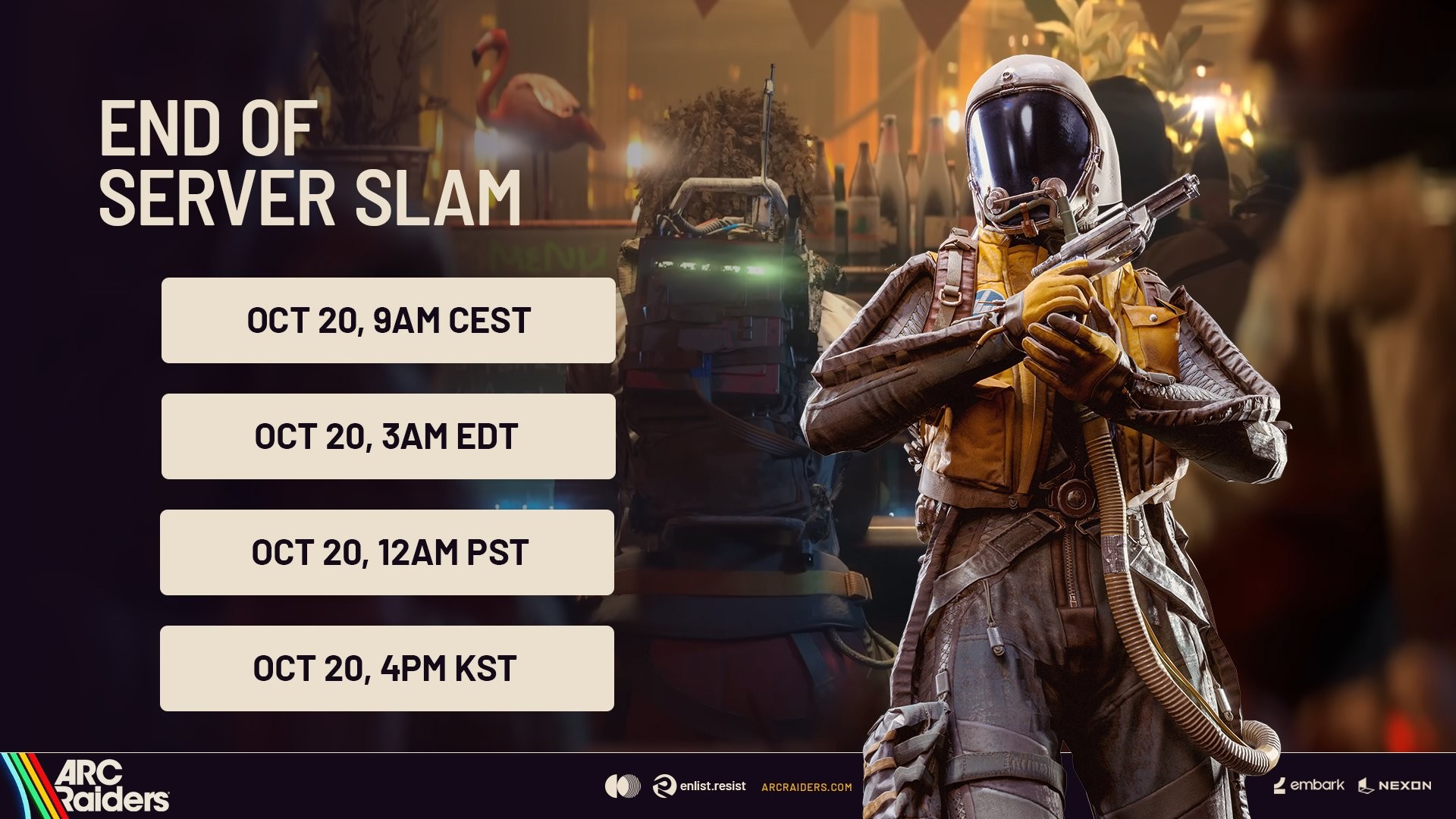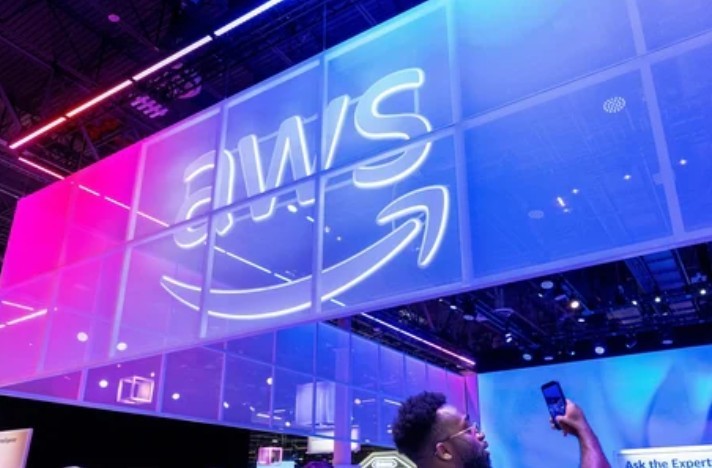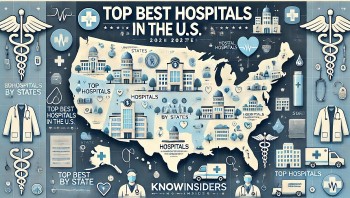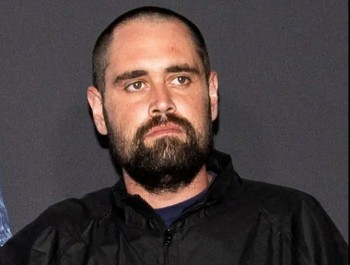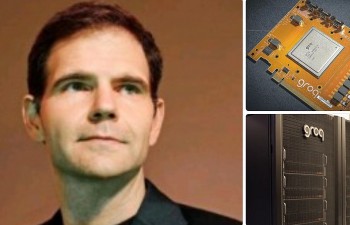How Safe Is America? Three New Year Bloody Attacks, One Question
 Mass Shootings in the U.S: Understanding the Causes, History, and Safety Measures Mass Shootings in the U.S: Understanding the Causes, History, and Safety Measures |
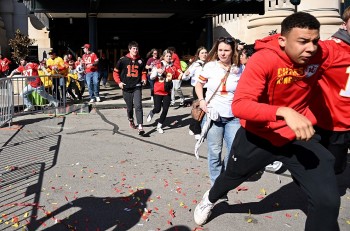 How Many Mass Shootings in the U.S in 2024? How Many Mass Shootings in the U.S in 2024? |
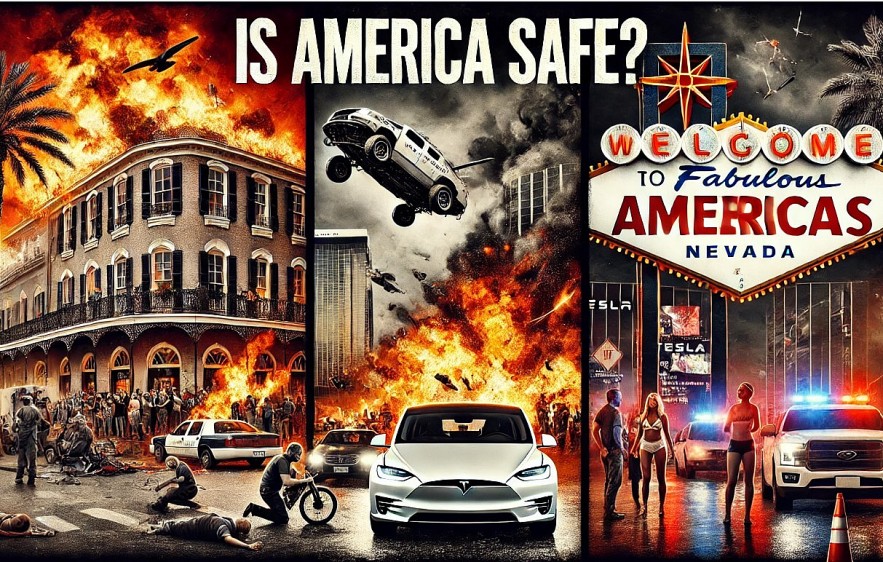 |
| Is America Safe? |
On New Year’s Day 2025, three horrifying incidents shocked the nation: a truck ramming in New Orleans that killed 15, a Tesla Cybertruck explosion in Las Vegas resulting in one death and several injuries, and a mass shooting in Queens that left 12 injured. While the incidents seem unrelated, they underscore a deeper, persistent crisis.
With more than 488 mass shootings recorded in 2024 alone, the question looms large: Is America still a safe place?
The Incidents: A Harrowing Start to the Year
New Orleans Truck Ramming
On January 1, Bourbon Street in New Orleans—a symbol of American celebration—turned into a scene of devastation. Shamsud-Din Jabbar, an ISIS-linked Texas native, drove a Ford F-150 electric truck into a crowd of revelers, killing 15 and injuring dozens. The truck bore the Islamic State flag, a chilling reminder of the enduring threat of domestic radicalization. The attack targeted not just lives but the heart of a cultural hub, raising questions about counterterrorism measures in the U.S.
Las Vegas Explosion
Later that day, a Tesla Cybertruck exploded outside the Trump International Hotel in Las Vegas. The driver perished instantly, while seven others suffered injuries. The FBI is treating the explosion as an act of terrorism. The incident highlighted the vulnerability of urban centers and the increasing use of unconventional methods in terror attacks. Targeting a high-profile location amplified its symbolic and psychological impact.
Queens Mass Shooting
The day ended with a gunman opening fire at a nightclub in Queens, New York, injuring 12 people. Details about the perpetrator remain scant, but the incident is part of a broader epidemic of gun violence. Such attacks are disturbingly common, with nightclubs, schools, and other public spaces often turning into battlefields.
The Alarming Statistics
The violence on New Year’s Day reflects a larger trend of mass attacks in the U.S. According to the Gun Violence Archive, there were more than 488 mass shootings in 2024, defined as incidents in which four or more people were injured or killed. For the past four years, annual totals have exceeded 600—a staggering and grim statistic.
The societal impact of this violence is profound. Public spaces once considered safe have become sites of fear and mourning. Communities face not only the immediate trauma of these incidents but also lasting economic and psychological repercussions. Businesses shutter, neighborhoods stagnate, and individuals carry invisible scars that shape their lives for years to come.
Immigration Policies and the Debate Over Security
The New Year’s attacks also reignited a heated debate over immigration policies, which have been a contentious issue in recent U.S. administrations. President Biden’s tenure was marked by a more lenient approach to immigration, emphasizing humanitarian values, inclusivity, and pathways to citizenship. Critics argue that this approach may have inadvertently contributed to national security vulnerabilities, allowing extremists to exploit loopholes.
Biden’s Lenient Immigration Policies
Under President Biden, policies aimed at reversing the hardline measures of his predecessor were implemented. These included ending the "Muslim travel ban," expanding refugee admissions, and limiting the use of detention centers for undocumented immigrants. Proponents viewed these steps as a return to American ideals of compassion and opportunity. However, detractors claim that they created gaps in border security, increasing the risk of radicalized individuals entering the U.S.
In the case of Shamsud-Din Jabbar, the ISIS-linked attacker in the New Orleans truck ramming, critics have pointed to his reported immigration status as an example of such vulnerabilities. Although Jabbar was a Texas native, the debate has been fueled by arguments that less stringent monitoring of immigrant communities and relaxed vetting processes might contribute to radicalization risks.
Trump’s Hardline Stance
President-elect Donald Trump, set to take office in January 2025, has promised a return to stricter immigration controls as part of his broader "America First" agenda. Trump’s policies during his first term included the construction of a border wall, strict refugee caps, and enhanced vetting procedures for individuals from nations identified as high-risk for terrorism. Trump has already signaled his intent to reinstate and expand these measures, claiming they are necessary to protect American lives.
Trump supporters argue that the attacks on New Year’s Day exemplify the consequences of Biden’s "soft" immigration policies. They see a direct correlation between leniency and an increase in domestic violence perpetrated by radicalized individuals. However, opponents of Trump’s policies caution against conflating immigration with terrorism, warning that such measures risk alienating immigrant communities and fostering divisions within the U.S.
Root Causes: Why Is America Grappling With Violence?
Gun Culture and Legislation
The U.S. stands out globally for its gun violence, driven in part by the sheer number of firearms in circulation—nearly 400 million, more than the country’s population. Weak legislation exacerbates the problem, with lax background checks, insufficient restrictions on assault weapons, and minimal waiting periods for purchases. In contrast, countries like Australia and the UK have implemented stringent gun control measures with remarkable success in curbing mass shootings.
Radicalization and Domestic Terrorism
The New Orleans truck ramming highlights the persistent threat of domestic radicalization. Extremist ideologies, whether religious or political, continue to find fertile ground in online spaces. Despite extensive counterterrorism efforts, the U.S. struggles to monitor and neutralize threats effectively. The rise of lone-wolf attackers further complicates detection and prevention.
Mental Health and Social Alienation
Mental health crises also play a significant role in violence. While not all perpetrators are mentally ill, a pattern of untreated conditions often emerges in investigations. The U.S. faces systemic challenges in providing accessible and affordable mental health care, leaving many individuals without the support they need. Additionally, societal alienation and economic inequality contribute to a sense of disconnection that can fuel violent behavior.
Media and Desensitization
The media’s role cannot be ignored. Sensationalized coverage of mass violence may inadvertently glorify attackers and inspire copycat incidents. Studies suggest that the constant barrage of violent imagery desensitizes the public, normalizing a culture of fear and aggression.
The Role of Policy: What Can Be Done?
Stronger Gun Control Measures
Comprehensive gun reform is critical. Policies such as universal background checks, assault weapon bans, and mandatory waiting periods have proven effective in other nations. The U.S. must overcome political gridlock to implement these changes if it hopes to reverse the tide of violence.
Enhanced Counterterrorism Strategies
Improved intelligence sharing, better monitoring of online extremist platforms, and robust deradicalization programs are essential to combating domestic terrorism. Law enforcement agencies must also adapt to the evolving tactics of modern terrorists.
Investing in Mental Health Infrastructure
Addressing mental health requires systemic change. Increased funding for mental health services, integrating mental health education in schools, and reducing stigma are vital steps. Proactive intervention can prevent crises from escalating into violence.
Community Engagement and Education
Grassroots initiatives can foster community resilience and inclusion. Programs that build trust among diverse groups and promote dialogue can counteract the polarization that often underpins violence. Public awareness campaigns about the consequences of gun violence and extremism can further empower communities to act.
A Bleak Future or a Turning Point?
The events of January 1 are a microcosm of a much larger issue: America’s struggle with violence. If left unaddressed, the consequences will be dire—further erosion of public trust, deeper social divides, and continued loss of innocent lives. However, the U.S. has the resources and the ability to change its course. It requires a collective effort involving policymakers, law enforcement, mental health professionals, and everyday citizens.
The question of safety is not just about statistics or policies; it’s about the kind of society Americans want to live in. Will they accept a reality where mass violence is normalized, or will they demand a better future? The answer lies in the actions taken today. The Biden-Trump divide on immigration and security highlights that while approaches differ, the ultimate goal must remain the same: a safer, united America.
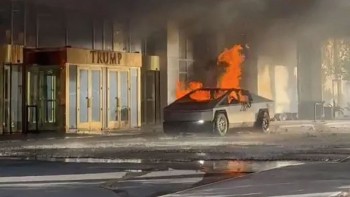 What is Trump Hotel Las Vegas: Famous, Luxury and 'Tesla Attack' What is Trump Hotel Las Vegas: Famous, Luxury and 'Tesla Attack' Tesla Cybertruck explodes outside Trump hotel in Las Vegas |
 List of 15 Victims in New Orleans Terror Attack: Honoring their Lives and Legacies List of 15 Victims in New Orleans Terror Attack: Honoring their Lives and Legacies A pickup truck collided with a crowd on Bourbon Street in New Orleans during New Year's celebrations early Wednesday morning, resulting in the deaths of ... |
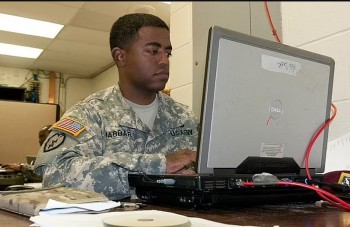 New Orleans Terrorist Shamsud Jabbar: Over 10 Years in U.S Army With Medals New Orleans Terrorist Shamsud Jabbar: Over 10 Years in U.S Army With Medals New Orleans Terrorist Shamsud Jabbar, a US citizen and Army veteran who served in Afghanistan. |
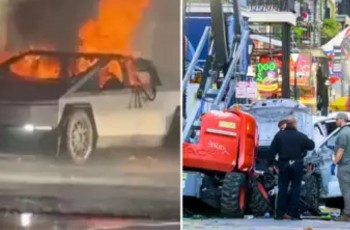 Chilling Links Between New Orleans Attack and Tesla Cybertruck Explosion: Terror Trail? Chilling Links Between New Orleans Attack and Tesla Cybertruck Explosion: Terror Trail? Federal investigators are looking into the possibility of a connection between the deadly truck attack in New Orleans on Wednesday and the deadly explosion outside ... |


